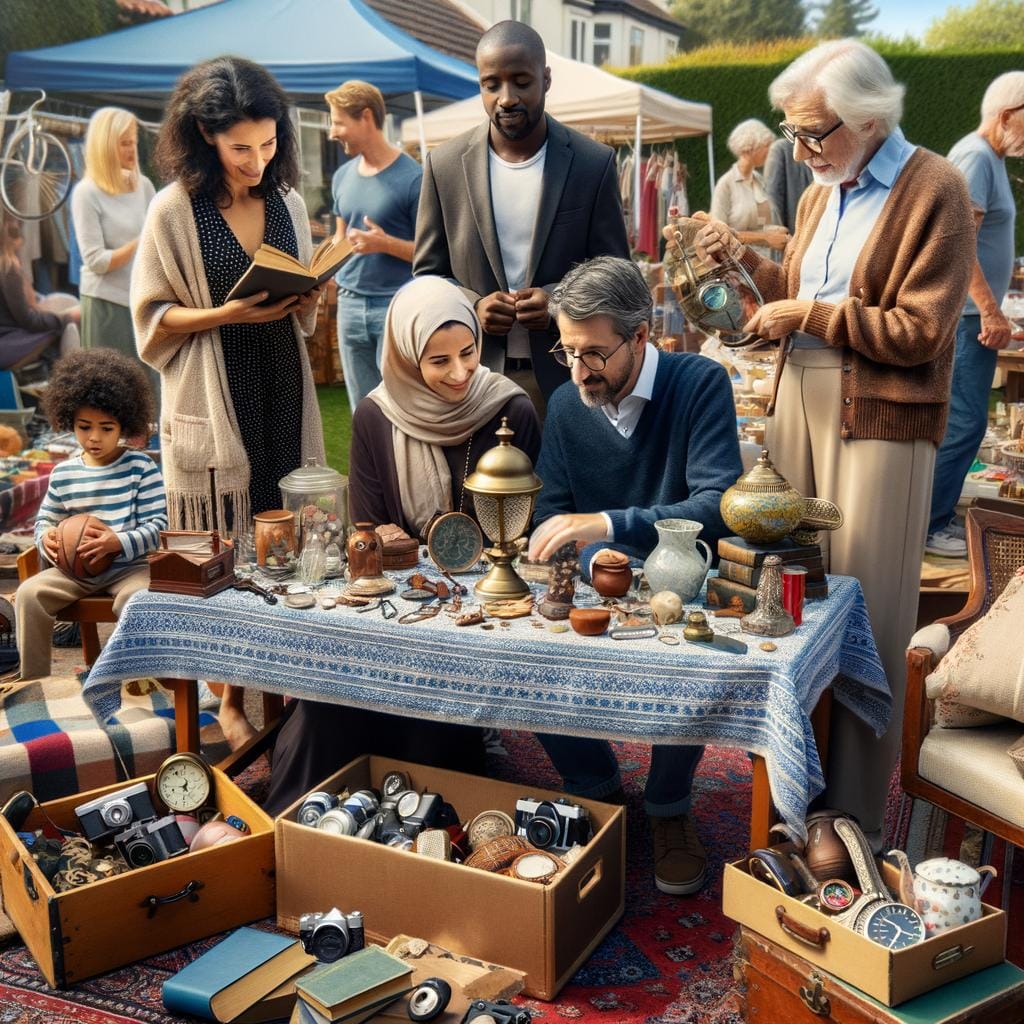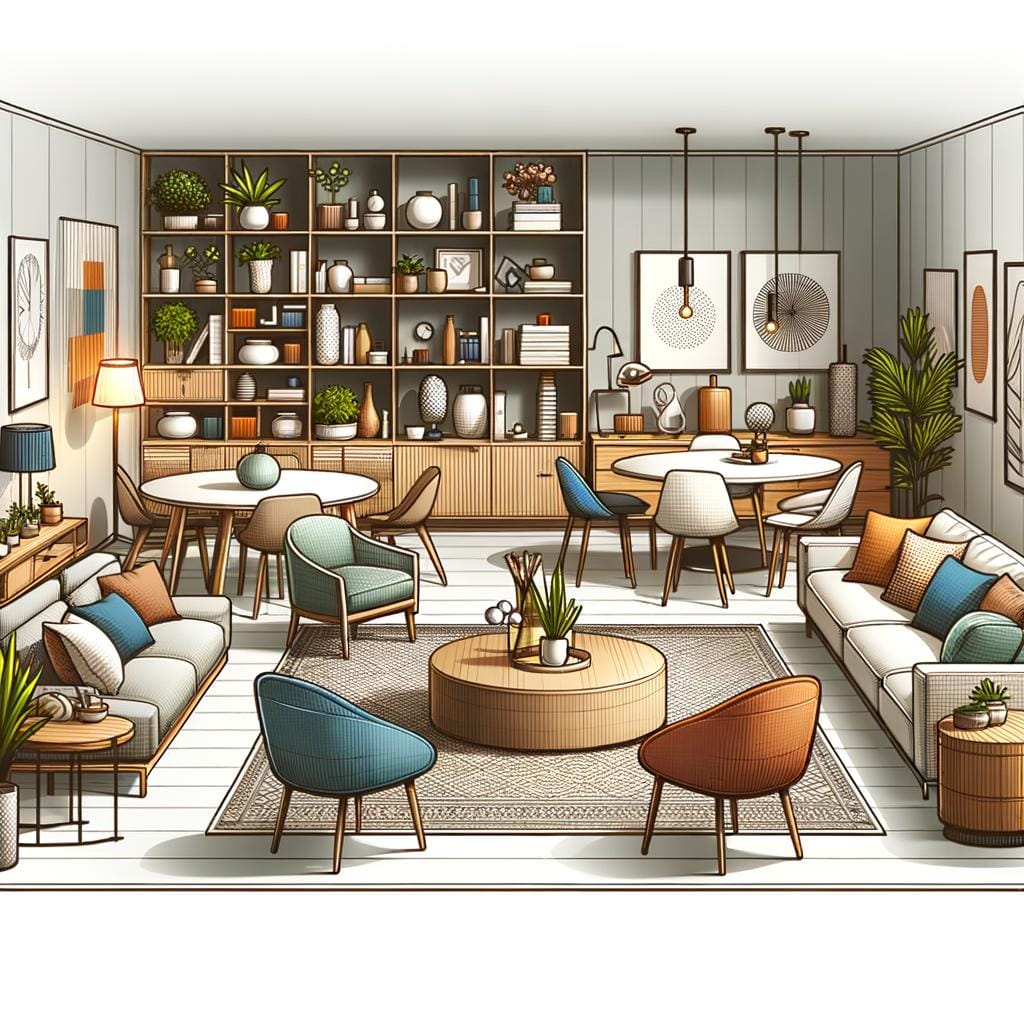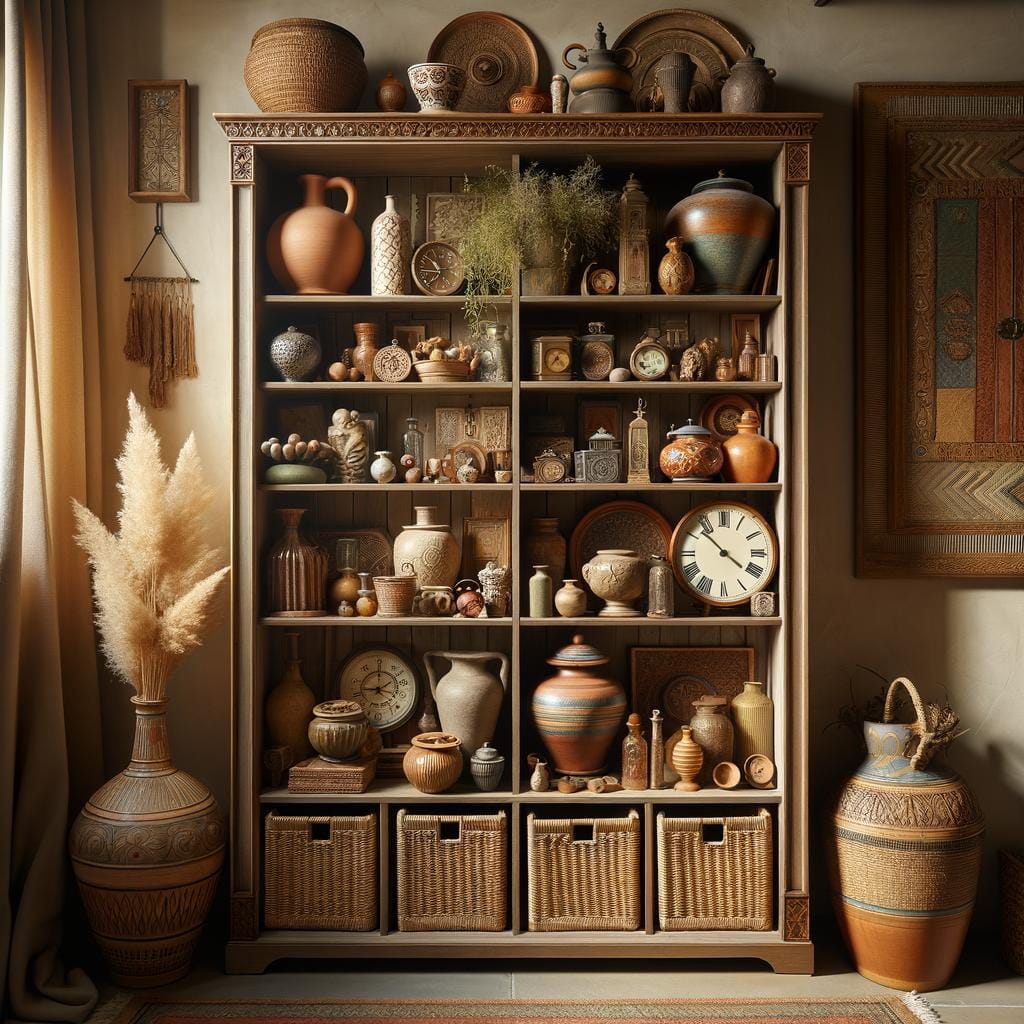Selling unwanted furniture can be a daunting task, but it comes with numerous benefits. Not only does it help declutter your space and free up room for new pieces, but it also allows you to make some extra cash in the process. Whether you’re looking to upgrade your home decor or simply unburden yourself from items you no longer use, selling unwanted furniture is a practical and rewarding option.
Before diving into the process of selling your unwanted furniture, take some time to assess each piece carefully. Consider factors such as condition, style, and market demand to determine which items are worth selling and which ones are better off being donated. Remember, what may seem outdated or worn-out to you could be someone else’s treasure.
Once you’ve identified the furniture you want to sell, it’s essential to prepare them adequately for listing. This includes cleaning each piece thoroughly, making any necessary repairs, and staging them in an appealing way. By showcasing your furniture in its best light, you can attract more potential buyers and increase your chances of making a successful sale.
Assessing Your Furniture
When it comes to selling unwanted furniture, it is essential to assess each piece carefully to determine what is worth selling and what might be better off donated. Start by evaluating the condition of the furniture – items that are in good condition, trendy, or high-quality are typically easier to sell compared to those that are worn out or outdated.
Consider the demand for certain types of furniture in the market as well. For example, vintage or mid-century modern pieces may fetch a higher price than generic, mass-produced items.
Another factor to consider when deciding what to sell and what to donate is your own preferences and lifestyle. Take into account whether a piece fits your current decor style, serves a practical purpose, or holds sentimental value.
If you no longer have a need for an item or if it no longer aligns with your taste, it might be a good candidate for selling. On the other hand, furniture that you still use regularly or have an emotional attachment to may be better suited for donation.
Making these decisions can be challenging, but taking the time to carefully assess each piece of furniture will ultimately help streamline the selling process and maximize your earnings. Remember that one person’s unwanted furniture could be another person’s treasure, so don’t hesitate to list items that are in good condition even if they no longer suit your needs.
| Beneficial Factors | Selling Over Donating |
|---|---|
| Condition of Furniture | Trendy or High-Quality Items |
| Demand in Market | Vintage or Mid-Century Modern Pieces |
| Personal Preferences | No Longer Aligned with Taste |
Preparing Your Furniture for Sale
When it comes to selling unwanted furniture, a crucial step in the process is preparing your items for sale. This involves cleaning, repairing, and staging the furniture to make it more appealing to potential buyers. By putting in some effort to enhance the overall presentation of your pieces, you can increase the likelihood of a successful sale. Here are some tips to help you get your furniture ready for listing:
- Start by thoroughly cleaning each piece of furniture. Dust, grime, and stains can be major turn-offs for buyers, so make sure to wipe down surfaces, vacuum upholstery, and polish wood accents.
- Address any necessary repairs or touch-ups before listing your furniture for sale. Loose joints, scratches, or damaged hardware should be fixed to ensure that your items are in good condition.
- Consider staging your furniture in a way that highlights its best features. Arrange the pieces in a well-lit area with minimal clutter to showcase their design and functionality.
By taking the time to clean, repair, and stage your furniture before listing it for sale, you can significantly improve its appeal and attract more potential buyers. Remember that first impressions matter when selling unwanted furniture online or through other platforms. Investing effort into preparing your items can ultimately lead to a quicker and more successful sale.
In addition to visual appeal, ensuring that your furniture is clean and well-maintained can also reflect positively on you as a seller. Buyers are more likely to trust sellers who present their items in good condition, which can lead to smoother negotiations and faster transactions. Put yourself in the buyer’s shoes and ask yourself what would attract you to a particular piece of furniture – this mindset can guide you in preparing your unwanted furniture for sale effectively.
Pricing Your Furniture
When it comes to selling unwanted furniture, one of the crucial steps in the process is determining the right pricing strategy. Setting reasonable prices can help attract potential buyers and ensure a successful sale. Here are some strategies to consider when pricing your furniture:
- Research: Before setting a price for your unwanted furniture, it’s essential to research similar pieces on the market. Look at online marketplaces, visit consignment shops, or attend yard sales to get an idea of what similar items are selling for. This will give you a better understanding of the market value of your furniture.
- Condition: Take into account the condition of your furniture when pricing it. Well-maintained pieces in good condition will typically fetch higher prices compared to items that are damaged or show signs of wear and tear. Be honest about the condition in your listings to set realistic expectations for potential buyers.
- Value: Consider the quality, brand, age, and rarity of your furniture when determining its value. Items from well-known brands or designers may command higher prices, while vintage or antique pieces could also be valued more by collectors.
Setting a competitive price is important when selling unwanted furniture as it can help generate interest from potential buyers and increase the likelihood of a quick sale. By following these pricing strategies and taking into consideration factors such as research, condition, and value, you can set reasonable prices that appeal to buyers looking for quality items at a fair cost.
Researching Selling Platforms
When it comes to selling unwanted furniture, choosing the right platform is crucial for reaching potential buyers effectively. Online marketplaces such as Facebook Marketplace, Craigslist, or apps like LetGo and OfferUp offer a vast audience and convenience in listing your items. These platforms allow you to reach a wide range of people in your local area without the need for a physical store or a middleman.
On the other hand, consignment shops provide an option for those who prefer to have professionals handle the selling process. These shops will display your furniture for sale in exchange for a percentage of the final selling price. While this option may involve fees or commissions, it can be beneficial if you lack time or expertise in marketing your items.
Yard sales are another popular choice for individuals looking to sell unwanted furniture quickly and directly to customers. Hosting a yard sale allows you to negotiate prices on the spot and interact face-to-face with potential buyers. This option is ideal for those who want a more hands-on approach to their sales process and are willing to dedicate time towards organizing the event.
| Platform Type | Advantages | Considerations |
|---|---|---|
| Online Marketplaces | Vast audience, convenient listing | Might require self-handling of transactions |
| Consignment Shops | Professional handling of sales process | Fees or commissions involved |
| Yard Sales | Direct interaction with buyers, immediate negotiation | Labor-intensive organization required |
Taking High-Quality Photos
Setting the Scene
Before you start snapping photos, ensure that your furniture is placed in a well-lit area with minimal distractions in the background. Natural light is ideal for highlighting details and colors, so consider taking pictures near a window or outside if possible. Make sure the furniture is clean and free of clutter, allowing potential buyers to focus on the piece itself.
Angles and Perspectives
Experiment with different angles to showcase various features of your furniture. Take close-up shots to highlight intricate designs or unique hardware, as well as wide shots to give an overall view of the item. Capture images from multiple perspectives to provide potential buyers with a comprehensive look at what you’re selling.
Focus on Details
Don’t forget to zoom in on specific details that make your furniture stand out. Whether it’s ornate carvings on a chair or sleek lines on a coffee table, close-up shots can help buyers appreciate the craftsmanship and quality of your items. Highlight any imperfections honestly but also emphasize the overall value and appeal of your furniture pieces.
By following these tips for taking high-quality photos, you can effectively showcase your unwanted furniture online and attract interested buyers who appreciate the beauty and functionality of your pieces. Remember that clear, detailed images can make a significant impact on the success of your sale, so take the time to capture your furniture in its best light before listing it for sale.
Writing Compelling Descriptions
When it comes to selling unwanted furniture, writing compelling descriptions is crucial in attracting potential buyers and ultimately closing the deal successfully. Your description plays a key role in showcasing the value and appeal of your furniture, as well as setting it apart from other listings on the market. Here are some tips to help you create engaging listings that capture the attention of interested buyers.
Highlight Key Features
One of the first things you should do when writing a compelling description is to highlight the key features of your furniture. Whether it’s a unique design, high-quality materials, or special functionalities, make sure to emphasize what makes your piece stand out. This helps potential buyers understand the benefits of purchasing your item and can increase their interest in making a purchase.
Be Detailed and Accurate
Provide detailed and accurate information about your furniture in the description. Include dimensions, materials used, brand (if applicable), and any special instructions for care or maintenance. Being transparent about the condition of the item, including any flaws or wear and tear, helps build trust with potential buyers and reduces the risk of dissatisfaction after the sale.
Create a Story
Engage potential buyers by creating a story around your furniture piece. Describe how it has served you well over the years, its sentimental value, or how it can enhance a space with its beauty and functionality.
A compelling narrative can evoke emotions in buyers and make them feel more connected to the item, increasing their desire to make it their own. By crafting a story that resonates with buyers’ needs and aspirations, you can effectively attract more interest and offers for your unwanted furniture.
Remember that writing compelling descriptions is an art that requires creativity, attention to detail, and effective communication skills. By following these tips and investing time in crafting engaging listings for your unwanted furniture items, you can significantly improve your chances of attracting interested buyers and successfully selling your pieces at desired prices.
Negotiating and Closing the Deal
When it comes to selling unwanted furniture, negotiating and closing the deal are crucial steps in the process. Effective communication with potential buyers can make a significant difference in finalizing the sale successfully. One key aspect of negotiating is being open to reasonable offers while also standing firm on your desired price. It’s important to strike a balance between flexibility and confidence in order to reach a mutually satisfactory outcome.
In addition to responding promptly to inquiries from interested buyers, it’s essential to be transparent about the condition of the furniture and any relevant details. Honesty builds trust between you and the buyer, ultimately increasing the likelihood of a successful transaction. Clear communication about pickup or delivery options, payment methods, and any other logistics will help streamline the process and prevent misunderstandings.
Once an agreement has been reached with a buyer, it’s time to finalize the sale. Make sure all terms are clearly outlined and agreed upon before proceeding with payment or any further arrangements. Consider using secure payment methods to protect both parties involved in the transaction. By following these guidelines for negotiating and closing deals when selling unwanted furniture, you can ensure a smooth and satisfactory experience for both yourself as the seller and the buyer.
Conclusion
In conclusion, selling unwanted furniture can be a rewarding process that not only helps declutter your space but also puts some extra cash in your pocket. By following the steps outlined in this guide, you can effectively assess, prepare, price, and market your furniture for sale. Taking the time to clean, repair, and stage your items will increase their appeal to potential buyers and improve your chances of making a successful sale.
Researching different selling platforms and choosing the one that best fits your needs is crucial in reaching a wider audience of buyers. Whether you opt for online marketplaces like Facebook Marketplace or Craigslist, consignment shops, or hosting a yard sale, each option has its own advantages and considerations. Additionally, capturing high-quality photos and writing compelling descriptions will help showcase your furniture effectively and attract more interested buyers.
By negotiating with potential buyers professionally and closing the deal efficiently, you can ensure a smooth transaction and finalize the sale of your unwanted furniture. Reflect on the process as a learning experience and celebrate each successful sale as a step towards achieving your decluttering goals. With dedication and persistence, you can turn your unwanted furniture into valuable assets for both yourself and others.
Frequently Asked Questions
How to Sell Furniture Effectively?
Selling furniture effectively involves creating enticing product listings with high-quality images and detailed descriptions. Utilizing multiple sales channels such as online marketplaces, social media, and even physical stores can help reach a larger audience. Providing exceptional customer service and being transparent about any defects or wear on the furniture can also increase sales.
Does Amazon Buy Used Furniture?
Amazon does not directly buy used furniture from individuals. However, they do offer a platform for third-party sellers to list and sell their used furniture items through their marketplace. The process involves creating a seller account, listing products, fulfilling orders, and paying applicable fees to Amazon.
Can You Sell Furniture You Make?
Selling furniture that you make can be a rewarding entrepreneurial venture. You can utilize various platforms such as Etsy, your own website, local craft fairs, and social media to showcase and sell your handmade furniture pieces. Building a strong brand reputation through quality craftsmanship and unique designs can help attract customers interested in purchasing your creations.

Hello, I’m April Denton, your go-to expert for all things home decluttering and organization. With over a decade of experience helping individuals transform their living spaces into serene, clutter-free sanctuaries, I am passionate about the life-changing benefits of decluttering. My journey into the world of organization began out of necessity, juggling a busy career and a bustling household. I quickly realized that a well-organized home was the key to a more balanced, stress-free life.





